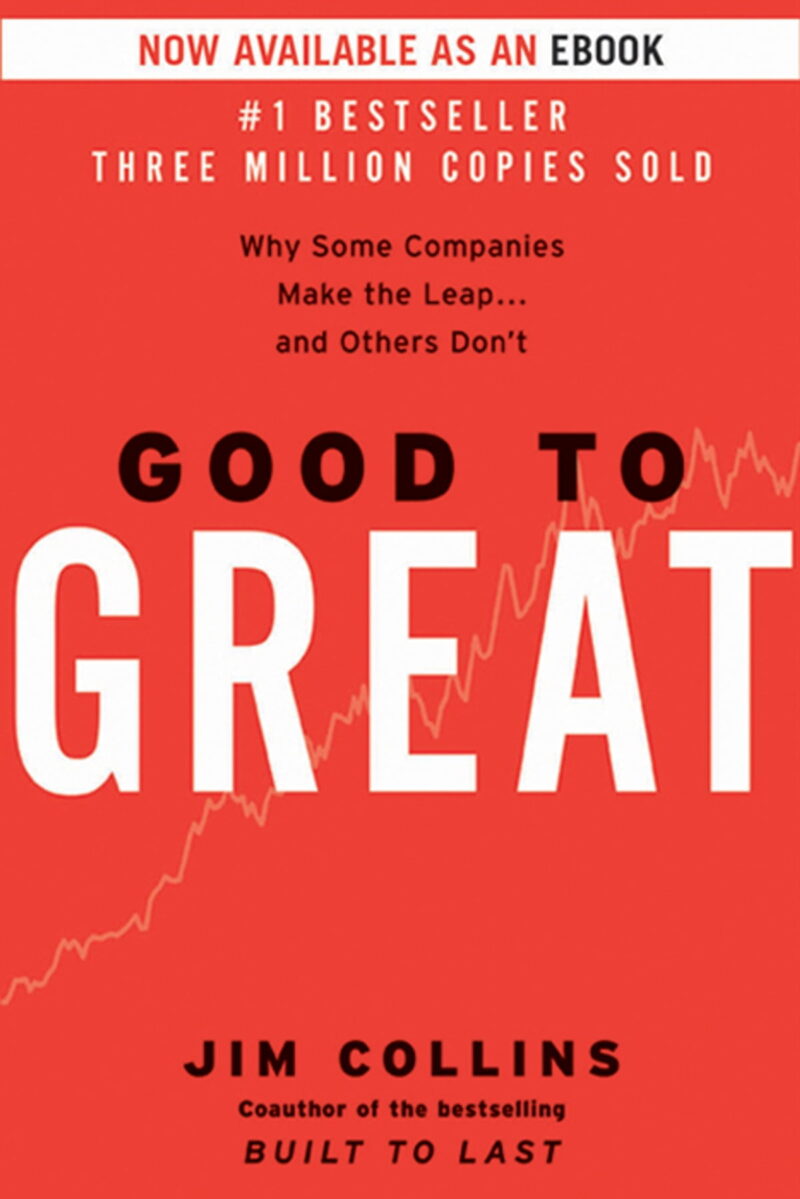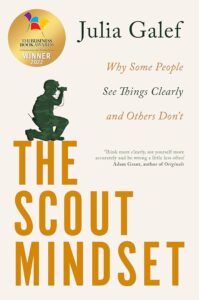Transforming from Good to Great Through Clarity, Motivation, and Discipline
Provides a roadmap for transitioning from good to great, focusing on key principles like clarity, motivation, and disciplined systems.
Subjects: Business Leaders
If you’re looking to transform your life or your organization from good to great, this book offers a roadmap filled with actionable insights and proven principles. Don’t settle for mediocrity; aim for greatness!
Good to Great covers several concepts that focus on the journey from being good to achieving greatness, both in personal and organizational contexts. The central idea of Good to Great is to provide a comprehensive roadmap for individuals and organizations to transition from being merely good to achieving true greatness. It focuses on key principles such as clarity, motivation, and disciplined systems to guide this transformation. The book aims to empower readers with actionable insights and proven strategies to unlock their full potential.
“If you’re engaged in work that you love and care about, for whatever reason, then the question needs no answer. The question is not why, but how.”
Here are some of the most important points covered in the book:
1. The Hedgehog Concept
– The book emphasizes the importance of understanding what you or your organization can be the best at. This is not a goal or a strategy but an understanding. It’s about focusing on a simple, crystalline concept that guides all decisions.
“The single most important form of discipline for sustained results is fanatical adherence to the Hedgehog Concept and the willingness to shun opportunities that fall outside the three circles.”
2. Technology Accelerators
– Good-to-great organizations think differently about technology. Technology alone can’t make an organization great, but when used correctly, it can serve as an accelerator of momentum.
3. Discipline and Responsibility
– The book discusses the importance of having a highly developed system within which people have the freedom and responsibility to act. This balance between structure and freedom is crucial for achieving greatness.
“A culture of discipline involves a duality. On the one hand, it requires people who adhere to a consistent system; yet, on the other hand, it gives people freedom and responsibility within the framework of that system.”
4. Motivation
– Those who achieve greatness are motivated by a deep creative urge and an inner compulsion for sheer unadulterated excellence for its own sake. They are not motivated by fear or by what others are doing.
5. Clarity and Simplicity
– The book argues that achieving greatness doesn’t necessarily require more work or suffering than remaining mediocre. What it does require is clarity—knowing what is vital and what is not.
6. The Importance of the Right People
– The book emphasizes that no technology can turn the wrong people into the right people. The right team is crucial for any endeavor aiming for greatness.
7. Never Settling for Less
– The ethos of never being satisfied, always striving for more, is a recurring theme. It’s not about being discontent but about pushing the boundaries of what’s possible.
“The key elements of greatness are deceptively simple and straightforward. The good-to-great leaders were able to strip away so much noise and clutter and just focus on the few things that would have the greatest impact.”
Case Studies
Good to Great provides several real-life examples and case studies to illustrate its principles. Here are some notable ones:
Wells Fargo
– This example highlights the importance of understanding what a company can and cannot be the best at. Wells Fargo initially tried to be a global bank but realized it couldn’t outperform Citicorp in that arena. The company then focused on what it could excel at: running a bank like a business, specifically in the western United States. This shift in focus turned Wells Fargo into one of the best-performing banks in the world.
Airline Pilot Model
– This example illustrates the balance between freedom and responsibility within a well-defined system. The pilot has the ultimate responsibility for the airplane and the lives of the people on it but operates within a strict system. This model is likened to how good-to-great companies manage their operations.
Dave Scott, Ironman Triathlete
– Dave Scott, a six-time winner of the Hawaii Ironman Triathlon, exemplifies the discipline required to achieve greatness. Despite burning 5,000 calories a day in training, he would rinse his cottage cheese to remove extra fat, believing that even this small step would give him an edge. This story illustrates the book’s principle of doing whatever it takes to become the best.
“All good-to-great companies began the process of finding a path to greatness by confronting the brutal facts of their current reality. When you start with an honest and diligent effort to determine the truth of your situation, the right decisions often become self-evident.”
Finally
Good to Great is a transformative experience designed to elevate you from the realm of ‘good’ to the pinnacle of ‘great.’ Whether you’re an individual seeking personal growth or part of an organization aiming for higher success, this book offers a comprehensive, actionable roadmap. With its focus on key principles like clarity, motivation, and disciplined systems, it’s the resource you’ve been waiting for to unlock your true potential. Don’t miss this opportunity to elevate your life and achieve greatness!
——-
Extra
As an MBA student, you're already on the path to becoming a future leader, manager, or entrepreneur. The book offers invaluable insights that can significantly enhance your educational journey and future career. Here's why you should consider buying it: 1. Practical Wisdom: This book goes beyond theoretical concepts and provides real-world examples and case studies that you can relate to and learn from. 2. Leadership Skills: The book delves into the qualities that make a great leader, offering you a blueprint for your own leadership journey. 3. Strategic Thinking: Learn about the 'Hedgehog Concept' and how focusing on what you can be the best at can drive success, a crucial lesson for anyone in business. 4. Organizational Behavior: Understand the importance of disciplined people, disciplined thought, and disciplined action in transforming an organization from good to great. 5. Decision-Making: The book teaches you how to confront the brutal facts of your current reality, a skill that is indispensable in business strategy and decision-making. 6. Cultural Insights: Learn how to create a culture of discipline, balancing freedom and responsibility, which is essential for any organization's success. 7. Motivation and Psychology: The book explores the psychological aspects of business, like the Stockdale Paradox, which can help you maintain faith while confronting reality. 8. Networking and Discussions: Being familiar with the concepts in this book will not only make you more knowledgeable but also give you excellent talking points for networking events and interviews. 9. Career Advancement: The principles in this book are not just theories but actionable insights that you can apply in your future roles, giving you a competitive edge in the job market. 10. Lifetime Reference: This is a book you'll find yourself returning to at various stages of your career, making it a long-term investment in your personal and professional development. In summary, this book offers a comprehensive toolkit for aspiring business leaders like you, making it a must-have addition to your MBA curriculum.
—




